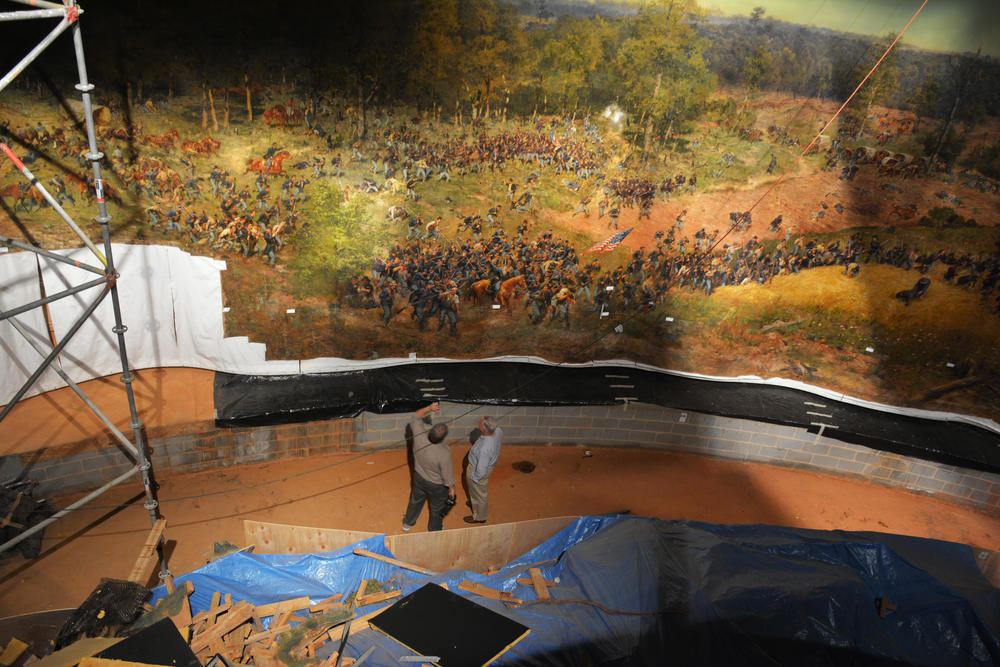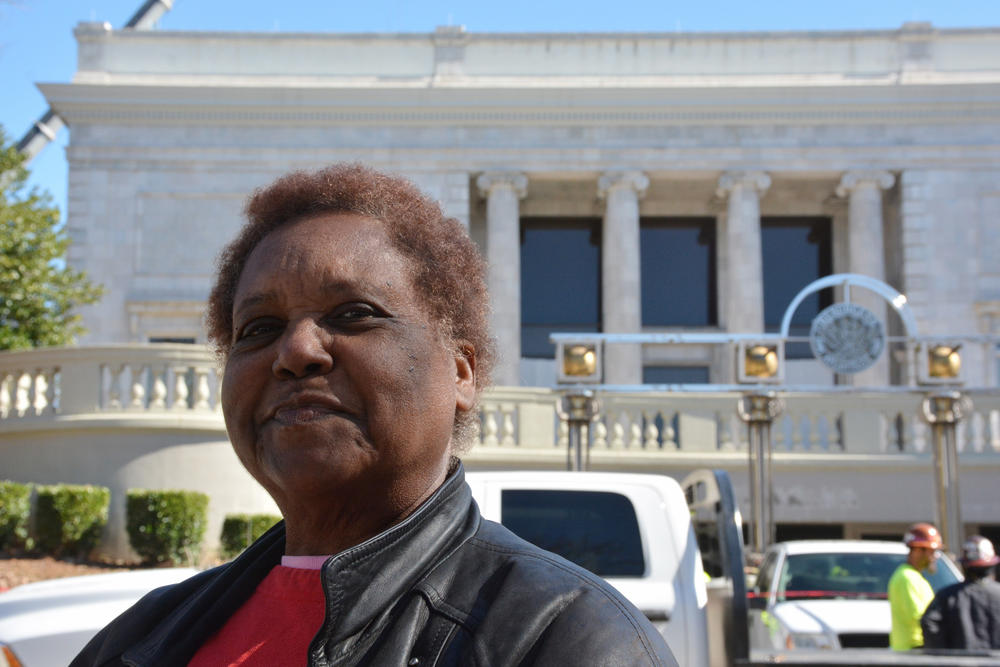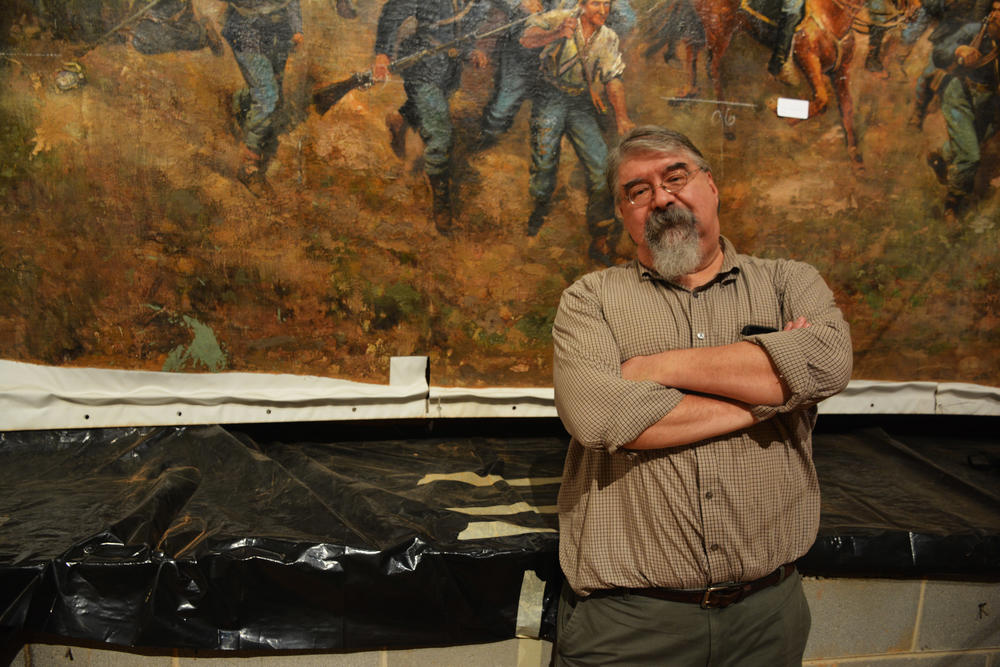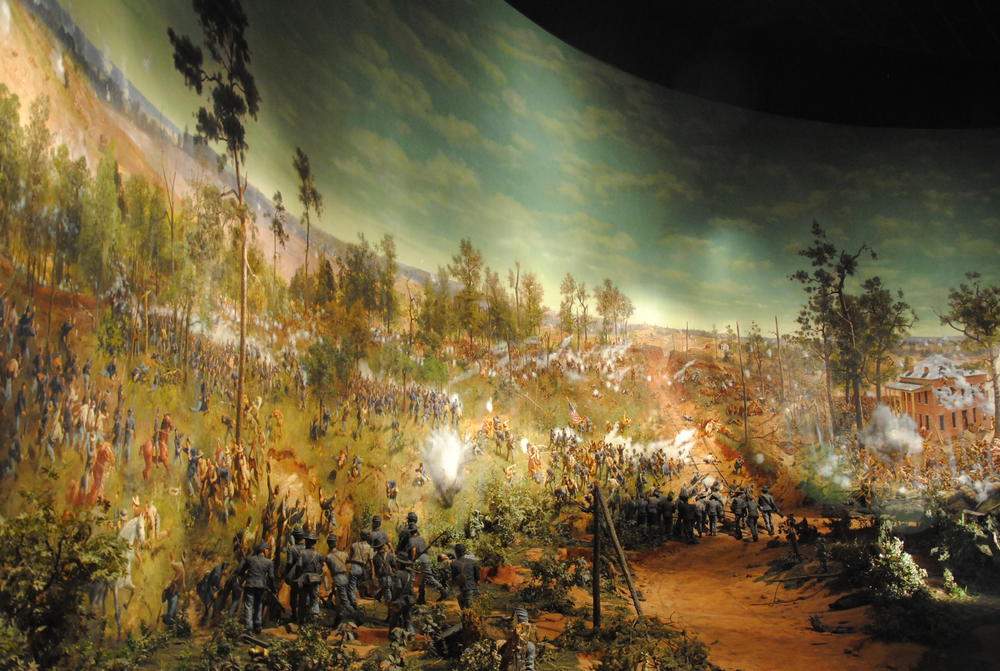Section Branding
Header Content
Motion Picture: Moving Atlanta's Massive Civil War Painting
Primary Content
This week, one of the largest pieces of Georgia’s Civil War history heads to its new home.
The panoramic painting Battle of Atlanta, also known as the Atlanta Cyclorama, arrives at the Atlanta History Center to undergo an extensive restoration.
But moving the massive painting, which is longer than a football field, hasn’t been easy.
A crucial point came Thursday afternoon, when a modest crowd gathered around a large crane in Atlanta’s Grant Park to witness the moment the Cyclorama would leave its home of nearly a century.
“Bye Cyclorama! You’re going to a better place,” said Atlanta native Sharon Jenkins.
Jenkins, who’s African-American, said she’s got mixed feelings about the painting, which has long been a symbol of Confederate heritage.
“I don’t forget the past, but I do learn from the past, and I’m hoping that that’s what people will take from the cyclorama painting,” she said.
The work to ensure the painting’s future started months ago and turned the auditorium that’s housed the Cyclorama for almost a century into a construction site.
On a recent visit, rubble stacked in piles under blue tarps and scaffolding reached high into the air. The panorama, which debuted in 1886, depicts scenes of Confederate and Union soldiers from the 1864 fall of Atlanta during the American Civil War.
"It's really not part of the normal art conservation that you see, because this has primarily been an engineering challenge up to this point," said Gordon Jones, Senior Military Curator with the Atlanta History Center.
Jones has helped oversee preparations for the move, which has involved rolling up the towering, 130-year-old painting onto two 45-foot-tall scrolls, each weighing about six tons.
Our preservation experts have divided the cyclorama painting & scrolled it in preparation for its relocation. More: https://t.co/m4cvF5E0Ws pic.twitter.com/RVmrziKU0t— Atl History Center (@ATLHistCenter) February 8, 2017
"And then both scrolls will be lifted by crane through two holes in the roof, then once outside of the building, they will be laid down flat onto flatbed trucks, and then we do the same thing to put them back into the new building," Jones explained.
That new building is at the Atlanta History Center. The nonprofit struck a deal with the city, which owns the painting, to restore and display it for the next 75 years.
Jones says it's a good move: Atlanta sheds the costs of upkeep, and the history center can add historical context to the painting.
Battle of Atlanta, which depicts a Union victory, was originally created for a northern audience. But when it moved south, the cyclorama became an attraction for those drawn to the “Lost Cause” narrative of the Confederacy.
“And, interestingly enough, this is exactly the way that the paintings were moved back in the 1880s and 1890s,” Jones said.
“You realize that if it’s this difficult nowadays to move this giant thing from point A to point B how much more difficult it was back in the 19th century,” said Sara Velas, president of the International Panorama Council.
She said panoramas once were popular entertainment, like 19th century IMAX movies.
Battle of Atlanta is one of just three panoramas created around the turn of the 20th century— along with The Battle of Gettysburg in Gettysburg, Pa., and The Panorama of Jerusalem in Ste-Anne-de-Beaupré, Quebec — that are still on display in North America.
"They did sort of fall out of favor once film was invented. So, that's a huge reason why people don't really know about them so much anymore," Velas said.
She hopes efforts to restore of Battle of Atlanta might start to change that. Velas said, when we spend so much time looking at computer and phone screens, panoramas are a reminder that art is interactive.
“Because [they] require physical presence, and that sort of engagement with the world is slipping away so much,” she said.
Sheffield Hale, President of the Atlanta History Center, hopes that’s an engagement with the actual history of the Civil War.
“We need to be able to talk about that honestly, and this massive artifact will give us a way to do that,” he said.
Back in Grant Park waiting for the Cyclorama to start its journey, Hale said it’s time to retire the “Lost Cause” narrative that’s followed the painting for so long and take it back from those who claim it as an artifact of Confederate heritage.
“What we’re trying to say is: it’s not someone else’s history, it’s...our history, but let’s talk about it in a factually-oriented way,” Hale said.
That conversation will start in earnest after the painting undergoes restoration and repairs. The Atlanta History Center plans to have it back on display by fall 2018.





